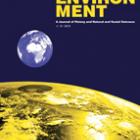Frost, Warwick, and Jennifer Laing. “From Yellowstone to Australia and New Zealand: National Parks 2.0.” Global Environment 12 (2013): 62–79. Republished by the Environment & Society Portal, Multimedia Library. http://www.environmentandsociety.org/node/7589.
Following the establishment of the world’s first national park at Yellowstone (USA) in 1872, the concept was rapidly transferred to Australia, New Zealand and Canada. This article examines this second wave of adoption—and adaption—focussing on five case studies from Australia and New Zealand. While Yellowstone provided the inspiration for further national parks and protected areas, what was developed was often very different from the American template. Some of these national parks were quite small and some primarily orientated towards recreation. The New Zealand examples were profoundly shaped by interactions with the indigenous peoples, whereas the Australian ones were not. By early in the twentieth century, this second wave was beginning to focus on protecting specific ecosystems and wildlife, developments well in advance of the USA at that time. In taking the Yellowstone model and greatly adapting it for a variety of different social, political and physical environments, this second wave laid the foundations for the internationalisation of the national parks concept.
— Text from The White Horse Press website
All rights reserved. Made available on the Environment & Society Portal for nonprofit educational purposes only, courtesy of Warwick Frost, Jennifer Laing, and XL edizioni.


